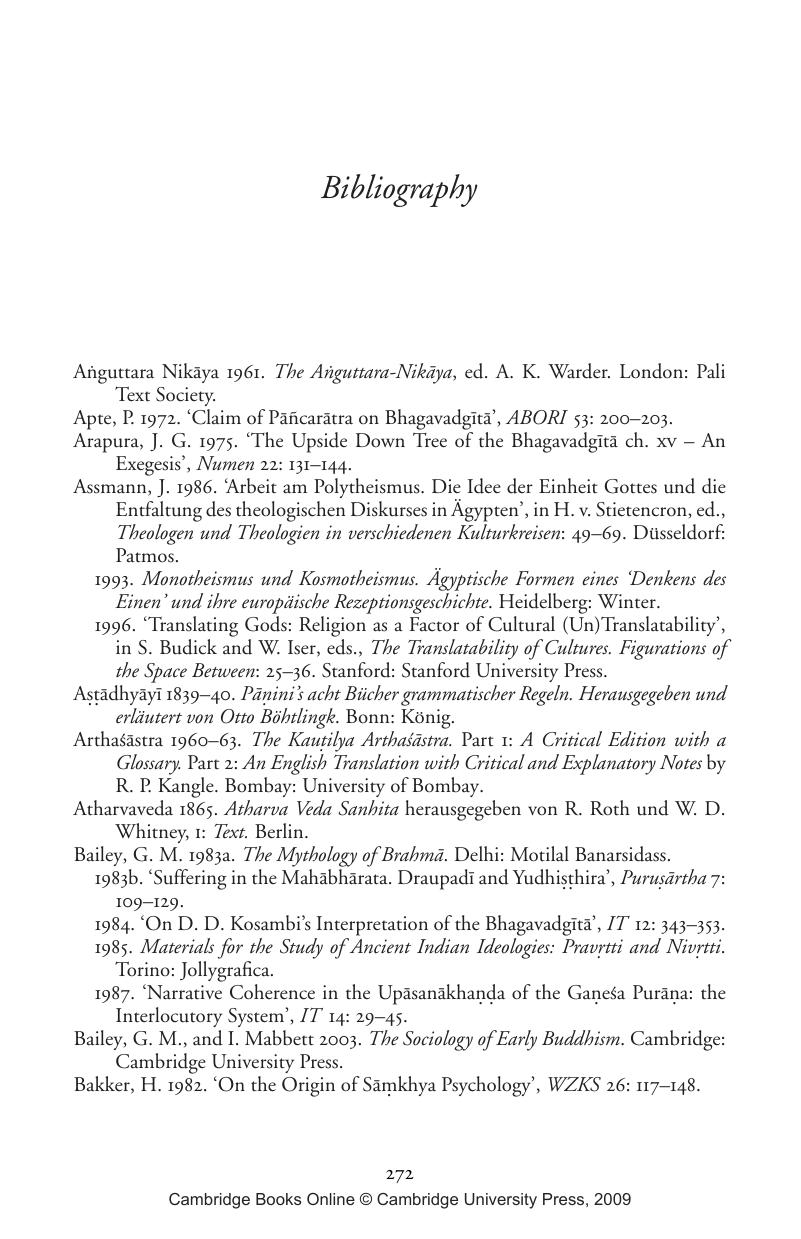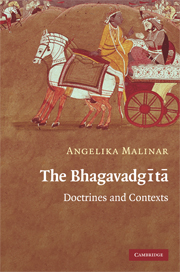Book contents
- Frontmatter
- Contents
- Acknowledgements
- List of abbreviations
- Introduction
- 1 The Bhagavadgītā in the history of research
- 2 Debates over war and peace in the Udyogaparvan of the Mahābhārata
- 3 The doctrines of the Bhagavadgītā
- 4 The doctrines of the Bhagavadgītā: summary and systematic considerations
- 5 Historical and cultural contexts
- Bibliography
- Index
- References
Bibliography
Published online by Cambridge University Press: 06 January 2010
- Frontmatter
- Contents
- Acknowledgements
- List of abbreviations
- Introduction
- 1 The Bhagavadgītā in the history of research
- 2 Debates over war and peace in the Udyogaparvan of the Mahābhārata
- 3 The doctrines of the Bhagavadgītā
- 4 The doctrines of the Bhagavadgītā: summary and systematic considerations
- 5 Historical and cultural contexts
- Bibliography
- Index
- References
Summary

- Type
- Chapter
- Information
- The BhagavadgitaDoctrines and Contexts, pp. 272 - 288Publisher: Cambridge University PressPrint publication year: 2007

